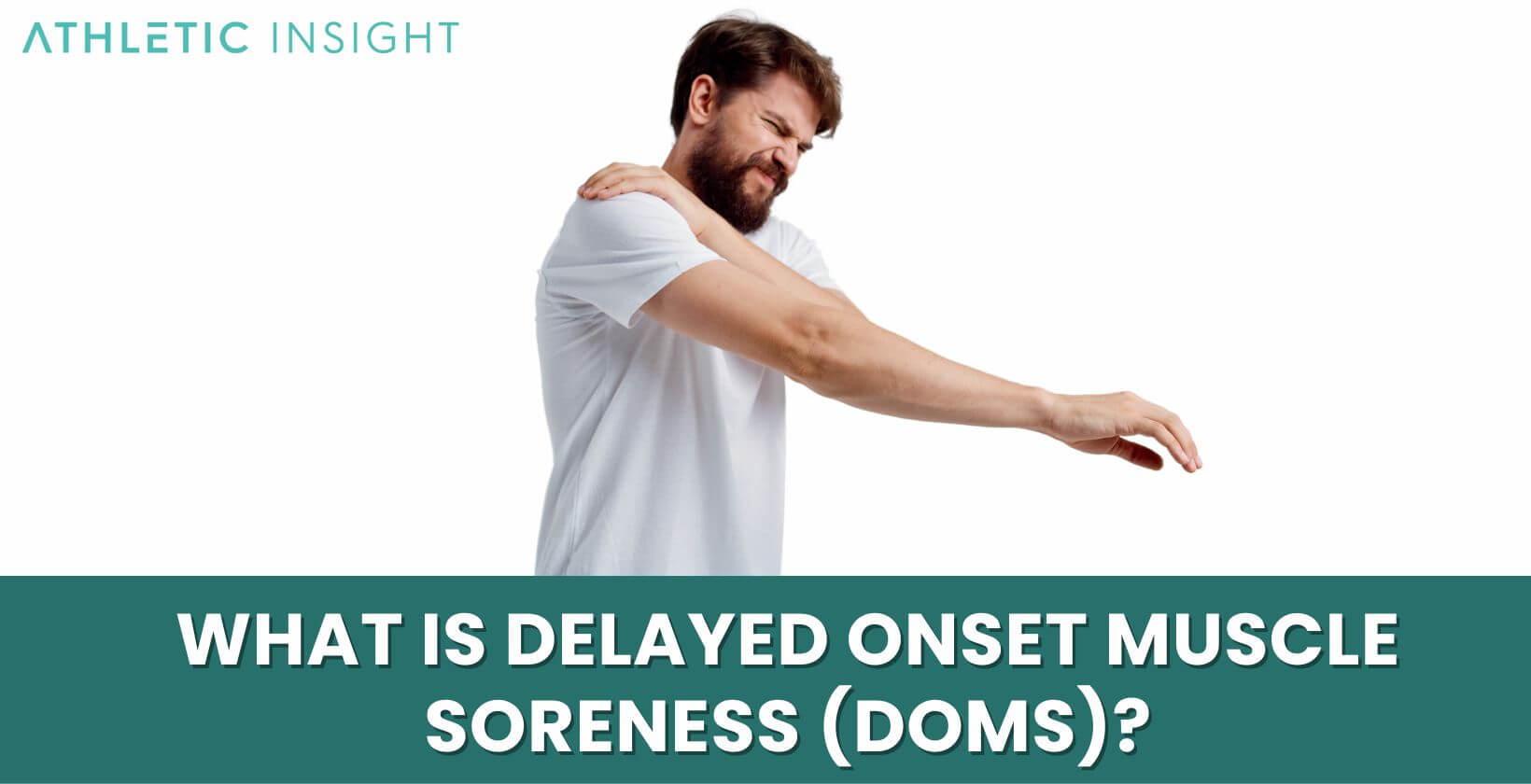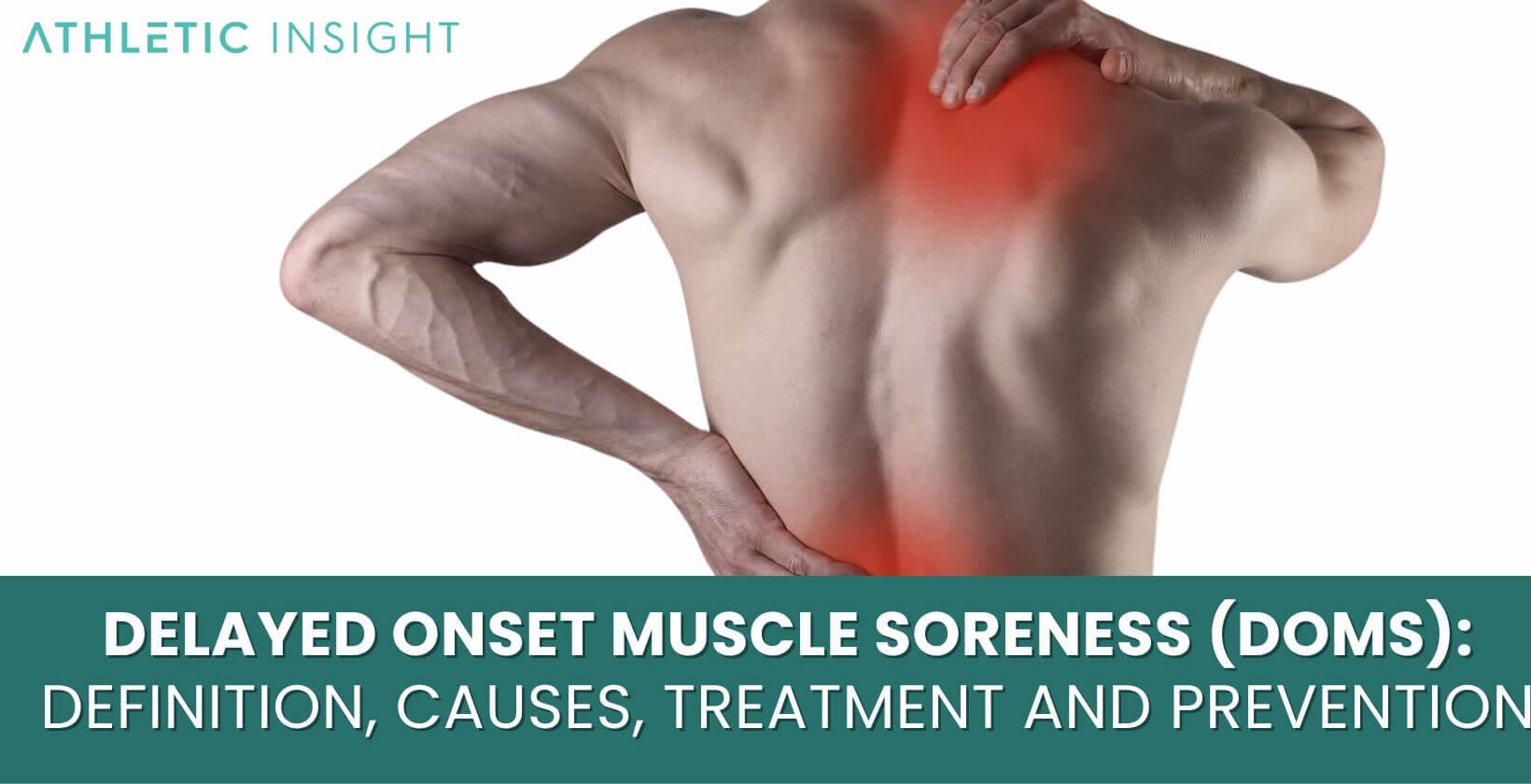Delayed Onset Muscle Soreness (DOMS) is a familiar experience for many engaged in physical activities, ranging from professional athletes to fitness enthusiasts. This condition, characterized by muscle pain and stiffness, arises after intense or new physical exercises. This comprehensive guide covers the intricacies of DOMS, exploring its definition, underlying causes, treatment methods, and prevention strategies. Understanding DOMS is pivotal for anyone active in physical fitness, as it not only affects performance but also informs effective recovery and training techniques.
What is Delayed Onset Muscle Soreness (DOMS)?
Delayed Onset Muscle Soreness, commonly referred to as DOMS, is the muscle discomfort and stiffness experienced typically 24 to 72 hours after intense or unfamiliar physical activity. It’s a natural, albeit often uncomfortable, response of the body to the stress and microscopic tearing of muscle fibers caused by exercise, particularly during eccentric movements or activities one is not accustomed to. DOMS differs from acute soreness – the immediate pain felt during or right after exercise – as it peaks later and can affect muscle performance and flexibility for days.

While it is a common phenomenon among those who exercise, the intensity and duration of DOMS can vary widely based on the individual’s fitness level, the type of exercise performed, and the muscle groups involved. It is often considered an indicator of muscle conditioning and adaptation processes triggered by increased physical demands.
What Causes Delayed Onset Muscle Soreness (DOMS)?
The primary cause of DOMS is believed to be related to microscopic damage to muscle fibers involved in exercise. This damage, especially prevalent in eccentric muscle contractions (where muscles lengthen under tension), leads to inflammation and a subsequent increase in muscle sensitivity and stiffness. Activities such as downhill running, high-intensity weightlifting, or extensive jumping are typical triggers due to the high levels of eccentric movement involved.
Additionally, DOMS can be accentuated in individuals engaging in new exercise routines or significantly increasing the intensity of their workouts. The feeling associated with DOMS includes a dull, aching pain in the affected muscles, increased muscle stiffness, tenderness to the touch, and a temporary reduction in muscle strength and range of motion.
What are the Symptoms of DOMS?
The symptoms of DOMS can vary in intensity but generally include a combination of muscle tenderness, stiffness, and reduced range of motion. Affected muscles may feel tender to the touch and tighter than usual. This discomfort often begins to develop within 24 hours post-exercise and can peak around 48 to 72 hours afterward. The severity of the symptoms typically correlates with the intensity and duration of the physical activity performed, especially if the activity is unfamiliar or involves a significant amount of eccentric movement.
Other common symptoms include a temporary decrease in muscle strength and a feeling of fatigue in the affected muscles. In some cases, there may be slight swelling in the muscle groups worked. It’s important to note that while DOMS can be uncomfortable, it shouldn’t be confused with pain resulting from a sports injury, such as a muscle strain or sprain, which often require different treatment approaches.
What are Treatments for Delayed Onset Muscle Soreness (DOMS)?
Treatment for DOMS primarily focuses on relieving discomfort and aiding the recovery process. Common approaches include rest, which allows the affected muscles time to heal, and light stretching, which can alleviate stiffness. Applying ice or cold compresses to the sore muscles immediately after intense exercise may help reduce inflammation, while heat therapy later on can increase blood flow and aid in the healing process.
Over-the-counter pain relievers, such as ibuprofen or acetaminophen, can be used to manage pain, though they should be used sparingly. Some individuals find massage therapy beneficial for reducing soreness and improving circulation. Gentle exercise, like walking or low-intensity cycling, can also promote blood flow and hasten recovery, but it’s crucial to avoid strenuous activities that stress the same muscle groups until the soreness has significantly subsided.
How to Prevent Delayed Onset Muscle Soreness (DOMS)?
Preventing DOMS involves several strategies, primarily focused on gradually increasing the intensity of physical activities. This gradual progression allows muscles to adapt to new stresses, reducing the likelihood of severe DOMS. Incorporating a thorough warm-up before exercising increases muscle temperature and flexibility, potentially decreasing the risk of muscle fiber damage. Similarly, a proper cool-down period, including stretching post-exercise, can aid in muscle recovery.
Staying hydrated and maintaining a balanced diet rich in protein, healthy fats, and carbohydrates can also support muscle recovery and reduce the severity of DOMS. Adequate sleep and rest days are crucial for muscle repair and preventing overtraining. For those engaging in high-intensity or new activities, cross-training can help distribute the physical stress across different muscle groups, mitigating the development of DOMS.
How Long Does Delayed Onset Muscle Soreness (DOMS) Last?
Delayed Onset Muscle Soreness typically lasts between three to five days, with the most intense pain usually occurring about one or two days after the exercise. The duration can vary depending on several factors, including the intensity of the workout, the individual’s fitness level, and their muscle recovery practices.
Active recovery techniques, such as light exercises and stretching, can help alleviate symptoms more rapidly than complete rest or immobilization. As the muscles adapt to the new physical demands, the intensity and duration of DOMS typically decrease with subsequent workouts.
Which Individuals Experience DOMS?
DOMS can affect anyone, regardless of their fitness level, but it is more commonly experienced by individuals who are new to physical activities or those who have recently changed their exercise routines.
First-time exercisers or those returning after a prolonged break often experience more pronounced DOMS symptoms. Even seasoned athletes can suffer from DOMS when they intensify their workout regimen or incorporate new exercises that challenge muscles in different ways. It’s not exclusive to those with muscle problems but can affect anyone who pushes their muscles beyond what they are accustomed to.
Why Do Muscles Get Sore?
Muscles get sore as a result of stress and microdamage caused by high-intensity or unfamiliar physical activities. This soreness is part of the body’s natural adaptation process, where muscle fibers are repaired and strengthened in response to the strain. The repair process, coupled with inflammation and the buildup of metabolic waste products in the muscles, contributes to the feeling of soreness. As muscles heal and adapt, they gradually become stronger and more resistant to similar levels of exertion in the future.
What Exercises Help Ease DOMS?
Light aerobic activities such as walking, swimming, or cycling at low intensity can be beneficial in easing the symptoms of DOMS. These exercises increase blood flow to the muscles, which helps reduce stiffness and promotes the removal of metabolic waste products. A cool down exercise will also help prevent DOMS from occurring.
Gentle stretching and yoga can also alleviate tightness and improve flexibility. It’s important, however, to avoid intense or high-impact exercises targeting the sore muscles until the symptoms have significantly subsided to prevent further muscle strain.
When Should You Seek Medical Help Regarding DOMS?
While DOMS is generally a benign condition, medical attention is advised if the pain is debilitating, lasts longer than a week, or is accompanied by severe swelling or redness. Additionally, symptoms such as dizziness, shortness of breath, or discolored urine (a possible indication of rhabdomyolysis, a severe muscle breakdown condition) require immediate medical intervention. Extreme muscle soreness that impedes daily activities should also be evaluated by a healthcare professional.
Does DOMS Mean Underlying Diseases?
Delayed Onset Muscle Soreness (DOMS) in itself does not typically indicate underlying diseases. It is a common response to unfamiliar or intense physical exertion and is generally considered a normal aspect of the muscle-building process. However, if DOMS symptoms persist beyond the usual recovery time or are recurrent with normal levels of physical activity, it may be advisable to consult a healthcare provider. In rare cases, persistent or extreme soreness could be a symptom of underlying health issues that require medical attention.
Does DOMS Mean You Had A Good Workout?
Experiencing DOMS is not necessarily an indicator of a good or effective workout. While it can signify that your muscles were pushed beyond their usual limits, leading to adaptation and growth, the absence of DOMS does not imply that your workout was ineffective. Consistent and progressive training, even without the presence of DOMS, can still lead to strength gains and improved fitness. It’s important to focus on overall workout quality and progression rather than the presence of soreness as a measure of effectiveness.
Is Lactic Acid the Cause of DOMS?
No, lactic acid is not the cause of DOMS. This is a common misconception. While lactic acid is produced during intense exercise and can lead to temporary muscle fatigue, it is cleared from the muscles shortly after exercise. DOMS, on the other hand, is primarily caused by microscopic tears in muscle fibers and the resulting inflammatory response, not the accumulation of lactic acid.
Is Delayed Onset Muscle Soreness Good?
Yes, Delayed Onset Muscle Soreness can be seen as a positive indication of muscle adaptation and growth, particularly for those new to exercising or engaging in more intense physical activities. It signifies that the muscles are adapting to new demands, leading to increased strength and endurance over time. However, it’s not necessary to consistently aim for soreness in every workout, as this can lead to overtraining and increased risk of injury.



